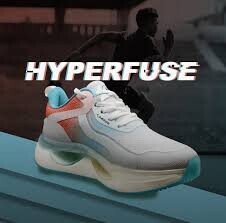When it comes to overall well-being, many people often overlook one of the most important parts of the body—your feet. They carry your weight, help you move, and support your posture throughout the day. Yet, poor footwear choices can lead to serious issues such as foot pain, back problems, and long-term mobility issues.
In this blog, we’ll explore the deep connection between footwear and foot health, why choosing the right shoes matters, and what features to look for—whether you’re dealing with arch pain, flat feet, or simply want to stay comfortable and mobile.
Why Foot Health Matters
Your feet contain 26 bones, 33 joints, over 100 muscles, ligaments, and tendons—all working together to provide stability and movement. Any disruption, whether due to improper support or injury, can cause not just foot pain but issues in the ankles, knees, hips, and even spine.
Foot problems like plantar fasciitis, bunions, hammertoes, or heel spurs often start with poor footwear choices. Wearing shoes that don’t support your feet properly can increase the risk of long-term damage.
Healthy feet = better balance, posture, mobility, and overall comfort.
The Dangers of Wearing the Wrong Footwear
Poor footwear isn’t just uncomfortable—it can cause or worsen a wide range of problems:
- Flat feet or fallen arches
- Heel pain or plantar fasciitis
- Back, knee, and hip pain
- Blisters, bunions, and corns
- Overpronation or supination (foot rolling inward or outward)
- Impaired circulation and numbness
Fashion-forward but structurally unsound shoes like high heels, flip-flops, or overly tight footwear can create more harm than style.
Key Features of Healthy Footwear
Good footwear combines style, structure, and support. Here are essential features that promote foot health:
1. Arch Support
- Helps distribute pressure evenly across your feet.
- Crucial for people with flat feet or high arches.
- Reduces stress on the heel and forefoot.
2. Cushioned Insoles
- Absorb shock during movement.
- Provide comfort for long hours of standing or walking.
- Memory foam and gel-based insoles offer excellent cushioning.
3. Wide Toe Box
- Prevents crowding of toes.
- Reduces risk of bunions, corns, and hammertoes.
- Allows for natural toe spread and flexibility.
4. Firm Heel Counter
- Keeps the heel aligned and prevents overpronation.
- Adds stability and ankle support.
5. Flexible Sole
- Allows natural foot motion.
- Reduces strain on muscles and joints.
- Should bend where the toes naturally flex.
6. Breathability
- Proper airflow prevents moisture buildup.
- Reduces risk of fungal infections and odor.
Orthopedic and Supportive Shoes: Who Needs Them?
You don’t need to be elderly or injured to benefit from supportive or orthopedic shoes. In fact, many modern designs combine orthopedic features with trendy aesthetics.
Ideal for people who:
- Stand or walk for long hours (teachers, nurses, retail workers).
- Experience chronic foot or leg pain.
- Have medical conditions like diabetes, arthritis, or plantar fasciitis.
- Need post-surgical support or injury recovery.
Orthopedic footwear is designed to enhance foot alignment, improve balance, and reduce pressure points.
Understanding Arch Types and Shoe Selection
One of the most important factors in choosing the right shoe is understanding your arch type:
Flat Arches (Low Arch)
- Often causes overpronation.
- Needs shoes with structured arch support and motion control.
Normal Arches
- Best suited to stability shoes that offer moderate support and flexibility.
High Arches
- Can lead to underpronation.
- Requires extra cushioning to absorb shock and support pressure points.
Tip: Wet your foot, step on a paper bag, and check the imprint to identify your arch type.
Footwear by Activity: Tailored Support Matters
Different activities put different demands on your feet. Your shoes should match the movement type.
Running or Jogging
- Choose running shoes with shock-absorbing soles.
- Ensure proper arch and heel support to avoid injuries like shin splints or stress fractures.
Walking
- Look for lightweight shoes with extra cushioning.
- Heel-to-toe motion support is key.
Work & Standing
- Cushioned insoles, arch support, and slip-resistant soles are crucial.
- Occupational shoes (like clogs or healthcare shoes) often meet safety and comfort needs.
Casual Wear
- Even everyday sneakers or sandals should offer arch support and a good fit.
- Avoid thin, flat soles like those found in cheap flip-flops.
Choosing the Right Fit: Size, Shape, and Feel
No matter how well-designed a shoe is, it won’t help if it doesn’t fit properly.
How to ensure a proper fit:
- Always try on shoes at the end of the day—your feet swell throughout the day.
- Leave about a half-inch space between your longest toe and the front of the shoe.
- Walk around to check comfort, heel grip, and arch alignment.
- Don’t rely on “breaking in” shoes—comfort should be immediate.
Foot Care Tips to Pair with the Right Footwear
Pair good shoes with good habits for maximum foot health:
- Stretch regularly: Especially calves and arches.
- Use orthotic inserts: If needed for extra arch or heel support.
- Rotate your shoes: Give them time to air out and maintain shape.
- Keep feet dry and clean: Prevent fungal infections and odor.
- Trim nails properly: To avoid ingrown toenails.
Conclusion: Step Smart, Stay Healthy
Foot health isn’t just about avoiding pain—it’s about maintaining an active, balanced lifestyle. Choosing the right footwear can prevent common foot conditions, enhance comfort, and even improve your posture and overall mobility.
Whether you’re walking into work, heading to the gym, or lounging at home, prioritize support, comfort, and fit. Your feet carry you through life—make sure they’re supported every step of the way.
Looking for shoe recommendations for foot health or custom orthotics? Drop your questions in the comments, and we’ll help you find your perfect fit!
